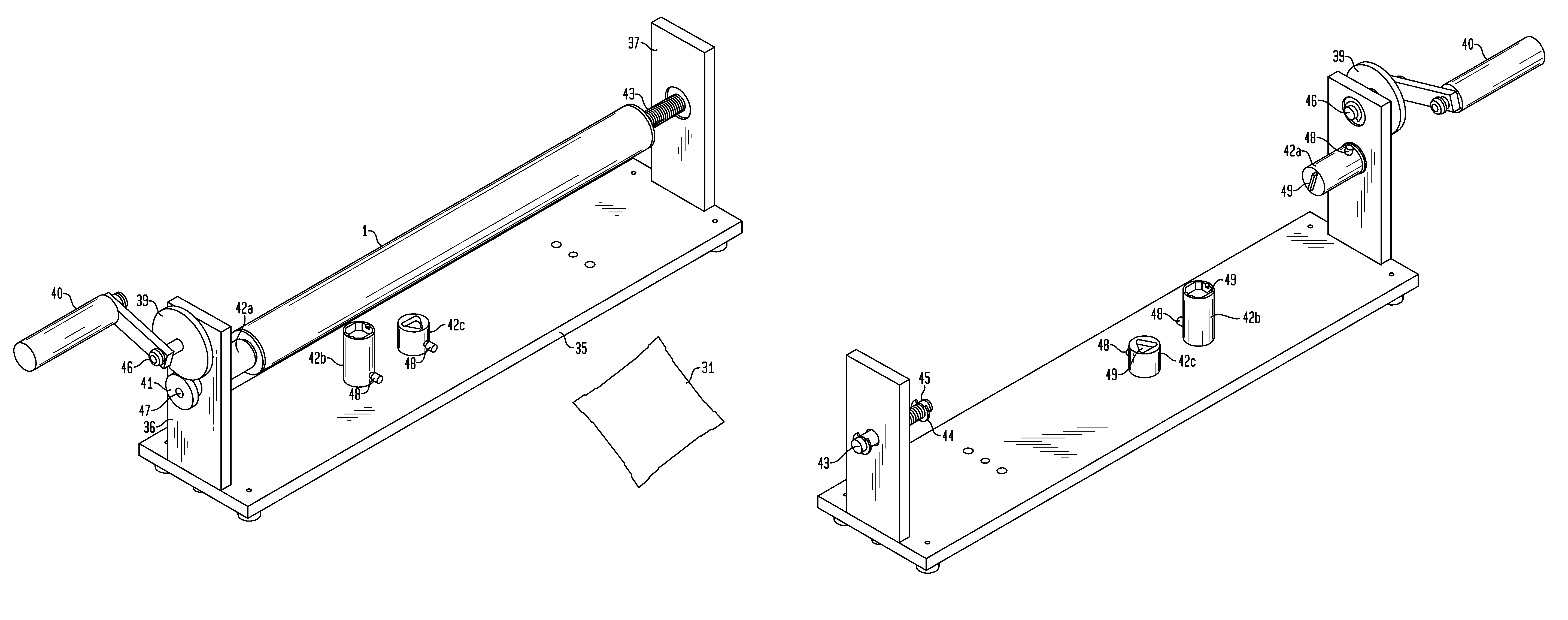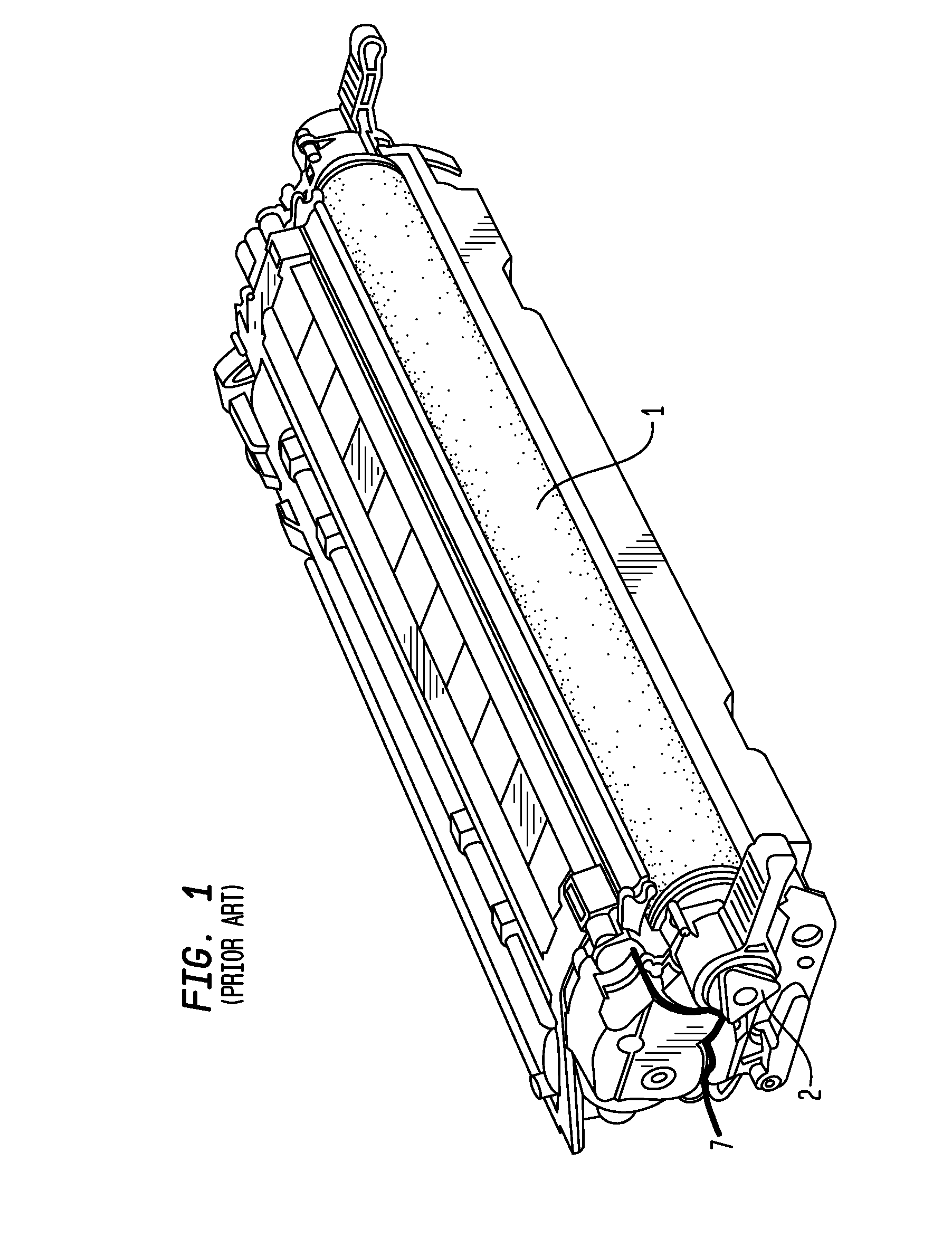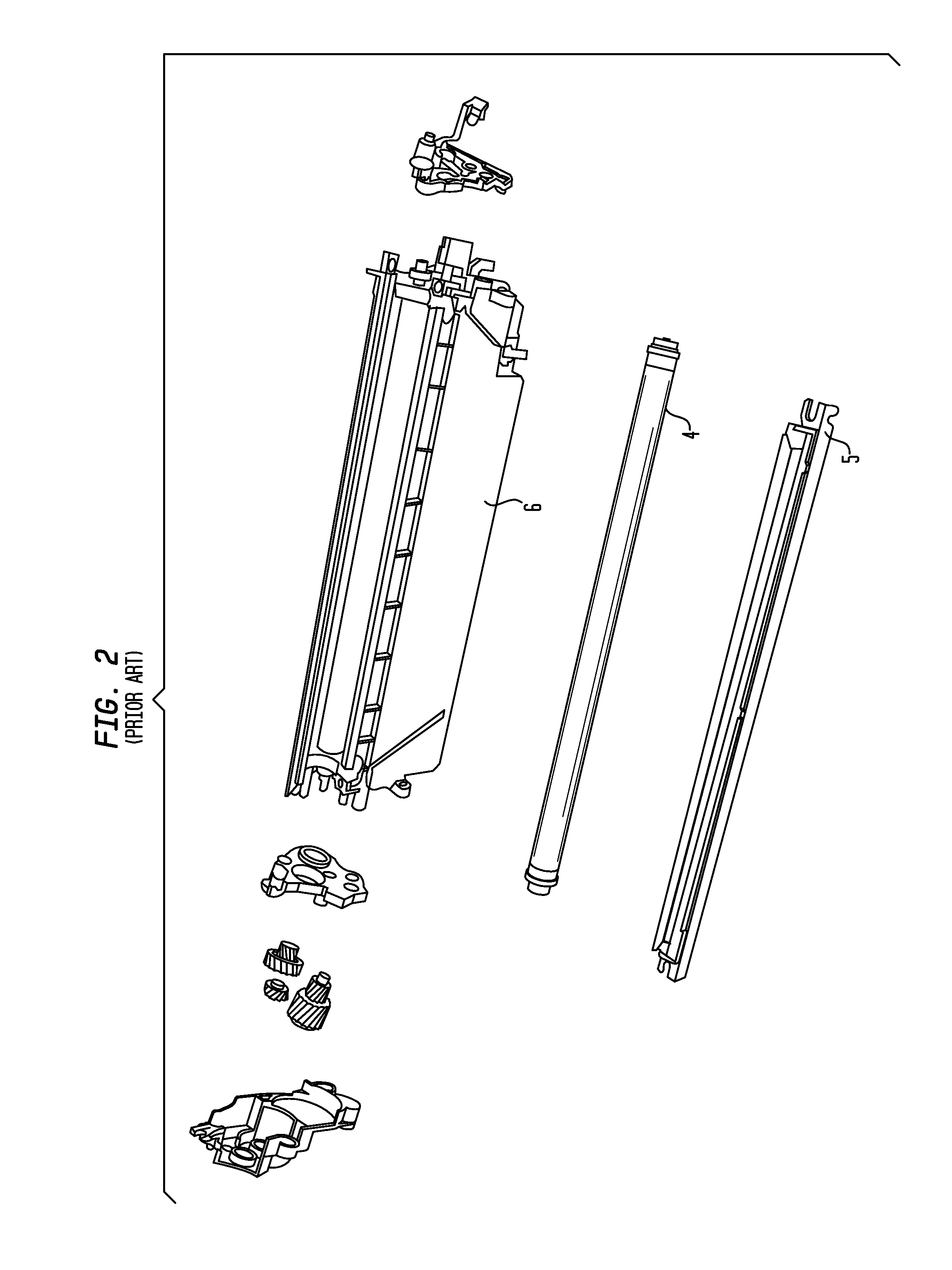Methods and apparatus for providing a liquid coating for an organic photoconductive drum
a technology of organic photoconductive drums and liquid coatings, which is applied in the direction of cleaning using liquids, instruments, applications, etc., can solve the problems of affecting the electrical performance the surface layer of the organic photoconductive drum is often damaged, and the remanufactured organic photoconductive drum is often unusable, so as to save the cost of purchasing and improve the electrical performance.
- Summary
- Abstract
- Description
- Claims
- Application Information
AI Technical Summary
Benefits of technology
Problems solved by technology
Method used
Image
Examples
Embodiment Construction
[0022]New organic photoconductive drums may be sold by original equipment manufacturers (OEMs) in a frame or cartridge containing many other components including toner, developer rollers, primary charge rollers and the like, or they may be sold separately either by an OEM (as is more common in the copier industry) or by an aftermarket organic photoconductive drum manufacturer as a replacement part for an OEM organic photoconductive drum.
[0023]The prior art contains a number of different cartridge arrangements that may be used by OEMs. One such arrangement is illustrated in FIG. 1. FIG. 1 shows a Hewlett Packard 2600 toner cartridge. This toner cartridge has an organic photoconductive drum 1, and the organic photoconductive drum has a drive gear 2 attached to one end. The toner cartridge of FIG. 1 has two sections, a toner hopper section and a waste bin section. These sections join at the match line 7 shown in FIG. 1. A typical toner hopper section, also from a Hewlett Packard 2600 c...
PUM
 Login to View More
Login to View More Abstract
Description
Claims
Application Information
 Login to View More
Login to View More - R&D
- Intellectual Property
- Life Sciences
- Materials
- Tech Scout
- Unparalleled Data Quality
- Higher Quality Content
- 60% Fewer Hallucinations
Browse by: Latest US Patents, China's latest patents, Technical Efficacy Thesaurus, Application Domain, Technology Topic, Popular Technical Reports.
© 2025 PatSnap. All rights reserved.Legal|Privacy policy|Modern Slavery Act Transparency Statement|Sitemap|About US| Contact US: help@patsnap.com



